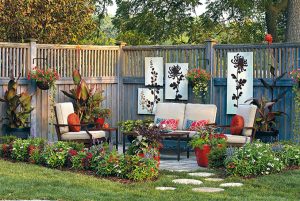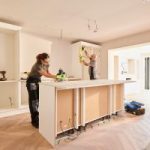In the bustling tapestry of modern life, the concept of home has transcended its traditional role. Beyond shelter, it has become a sanctuary for holistic well-being. This exploration delves into the realms of home wellness, unraveling the layers of design, technology, and mindfulness that contribute to creating a haven that fosters physical, mental, and emotional health.
1. Biophilic Design: At the core of home wellness is biophilic design, a concept embracing nature’s influence on our well-being. Integrating natural elements such as indoor plants, natural light, and sustainable materials not only enhances aesthetics but also promotes tranquility and connection with the environment.
2. Ergonomic Living Spaces: Wellness extends to the physical comfort of our living spaces. Ergonomic furniture, lighting, and spatial arrangements not only enhance functionality but also contribute to posture, reducing physical stress and creating an environment conducive to vitality.
3. Smart Home Technologies: The marriage of wellness and technology has given rise to smart home solutions. From intelligent lighting systems that mimic circadian rhythms to air purification technologies, these innovations optimize the home environment, ensuring it aligns with our well-being goals.
4. Mindful Color Palette: Colors wield a profound influence on our psyche. A mindful selection of color palettes can evoke emotions, calm the mind, or stimulate creativity. Incorporating soothing tones in bedrooms and vibrant hues in communal spaces contributes to a balanced and emotionally enriching atmosphere.
5. Tech-Free Sanctuaries: While technology enhances our lives, designated tech-free zones within the home are crucial. Creating spaces devoid of screens fosters mindful relaxation, promoting quality sleep and reducing the mental clutter associated with constant connectivity.
6. Home Fitness Integration: Physical wellness is intrinsically linked to our home environment. Integrating home fitness spaces not only encourages regular exercise but also breaks down barriers to a healthier lifestyle, making it more accessible and convenient.
7. Mindful Culinary Spaces: The kitchen is the heart of the home, influencing not only our physical health but also our emotional connection to nourishment. Designing a mindful culinary space, with ample natural light and ergonomic layouts, enhances the joy of cooking and promotes healthier eating habits.
8. Tranquil Retreats: Creating tranquil retreats within the home is essential for mental well-being. Cozy reading nooks, meditation corners, or even dedicated spaces for artistic expression provide havens for introspection and relaxation, promoting emotional balance.
9. Harmony in Sleep: Quality sleep is the foundation of overall wellness. Designing bedrooms conducive to rest involves considerations such as blackout curtains, comfortable bedding, and a serene ambiance that signals the body and mind to unwind.
10. Connectivity with Nature: Whether through expansive windows framing outdoor views or strategically placed natural elements, fostering a sense of connectivity with nature within the home enhances mental well-being. This connection is vital for grounding and rejuvenating the spirit.
Conclusion: The quest for home wellness intertwines elements of design, technology, and mindfulness, creating a space that nurtures the intricate balance of our physical, mental, and emotional well-being. As we navigate the demands of contemporary life, cultivating a home that prioritizes wellness becomes not just a choice but an imperative investment in our most valuable asset — our health and happiness.









